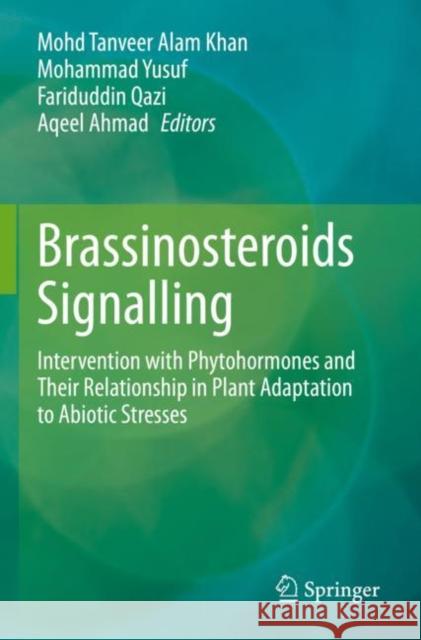Brassinosteroids Signalling: Intervention with Phytohormones and Their Relationship in Plant Adaptation to Abiotic Stresses » książka
Brassinosteroids Signalling: Intervention with Phytohormones and Their Relationship in Plant Adaptation to Abiotic Stresses
ISBN-13: 9789811657450 / Angielski / Miękka / 2023 / 295 str.
Brassinosteroids Signalling: Intervention with Phytohormones and Their Relationship in Plant Adaptation to Abiotic Stresses
ISBN-13: 9789811657450 / Angielski / Miękka / 2023 / 295 str.
(netto: 653,27 VAT: 5%)
Najniższa cena z 30 dni: 655,41
ok. 22 dni roboczych.
Darmowa dostawa!
This book presents the state of the skill of understanding brassinosteroids (BRs) signaling plus crosstalk with phytohormone and their association in plant adaptation to abiotic stresses comprising physiological, biochemical, and molecular developments. Due to progressively adverse environmental conditions and scarce natural resources, high-efficient crops have become more important than ever. For the successful improvement of stress-tolerant plants, it is vital to understand the precise signaling appliances that plants practice to abide stresses as well as how much these mechanisms are convinced by phytohormone. However, it is also debatable on which step plants can attain brassinosteroids (BRs) signaling from an evolutionary viewpoint. BRs are involved in modulating a large array of important functions throughout a plant’s life cycles. BRs are considered as one of the most important plant steroidal hormones that show a varied role in observing a wide range of developmental practices in plants. Our grip on brassinosteroids signaling has quickly extended over the past two decades, owing in part to the isolation of the constituents intricate in the signal transduction trail. The book proposes a useful guide for plant researchers and graduate students in connected areas.
This book presents the state of the skill of understanding brassinosteroids (BRs) signaling plus crosstalk with phytohormone and their association in plant adaptation to abiotic stresses comprising physiological, biochemical, and molecular developments. Due to progressively adverse environmental conditions and scarce natural resources, high-efficient crops have become more important than ever. For the successful improvement of stress-tolerant plants, it is vital to understand the precise signaling appliances that plants practice to abide stresses as well as how much these mechanisms are convinced by phytohormone. However, it is also debatable on which step plants can attain brassinosteroids (BRs) signaling from an evolutionary viewpoint. BRs are involved in modulating a large array of important functions throughout a plant’s life cycles. BRs are considered as one of the most important plant steroidal hormones that show a varied role in observing a wide range of developmental practices in plants. Our grip on brassinosteroids signaling has quickly extended over the past two decades, owing in part to the isolation of the constituents intricate in the signal transduction trail. The book proposes a useful guide for plant researchers and graduate students in connected areas.











